New collection aims to take Habitat "back to what it was many years ago"
New Habitat creative director Polly Dickens has unveiled her first full collection, 18 months after the household furnishings chain went into administration and closed all but three of its UK stores (+ slideshow + interview).
In an interview with Dezeen, Dickens said she was taking the brand "back to what Habitat was many years ago in the original Conran days, when people thought about it as colourful, good design and something that had a very strong personality."
Habitat, which was founded by Sir Terence Conran in 1964, was the first self-service, lifestyle-oriented design retailer, introducing UK shoppers to then-exotic continental staples like duvets and dried pasta.
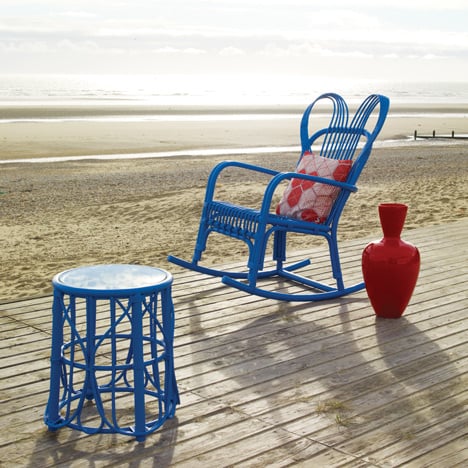
However it ran into trouble in recent years and in June 2011 was rescued from administration by Home Retail Group, which closed all but three of the chain's 30 UK stores. Dickens joined the group in January 2012.
"It had lost its way stylistically," said Dickens, who was formerly Creative Director of The Conran Shop and has worked at retailers Anthropologie, Liberty and The Source. "It had become quite diluted and people didn't really know what to expect from it any more."
Under Dickens the brand is designing the majority of its products in house and is moving production back to Europe where possible. "We are specifically moving our upholstery back into the UK and we're moving a lot of our manufacturing back into Europe; or at least out of China," said Dickens. "That’s really important."
See all our stories about Habitat.
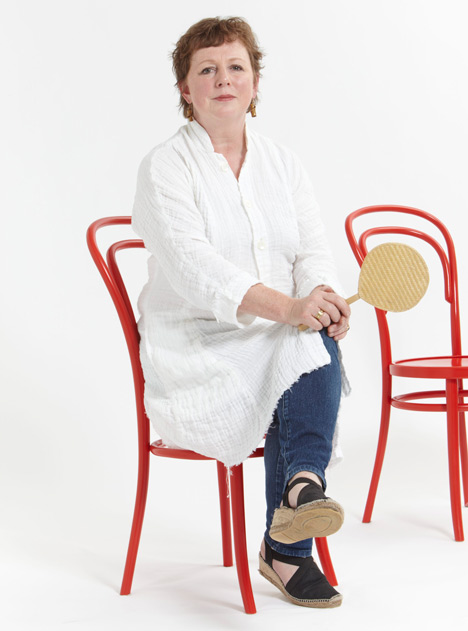
Below is a transcript of the interview with Dickens (above) conducted by Dezeen editor-in-chief Marcus Fairs:
Marcus Fairs: You joined Habitat as creative director at the start of the year and now your first full collection is about to hit the stores. What’s the thinking behind the collection?
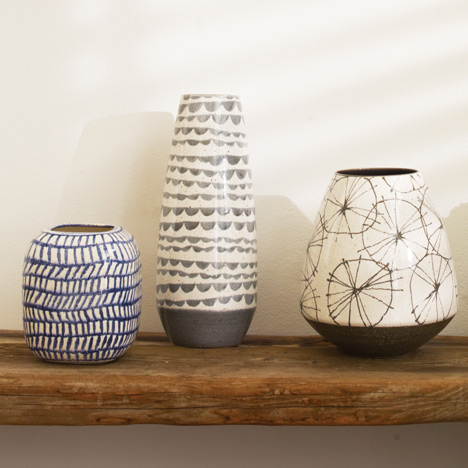
Polly Dickens: We've really been thinking about colour, craftsmanship and the hand of the maker: pieces that really feel as if the hand has touched them, be they ceramics [above] or a beautiful piece of rattan [below].
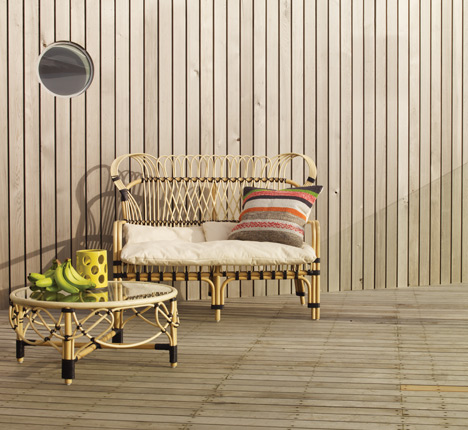
We’re keeping our sense of humour and creating in everything strong, cultural shapes that are really easy to live with that function beautifully. That's the general thinking. It's really going back to what Habitat was many years ago in the original Conran days, when people thought about it as colourful, good design and something that had a very strong personality.
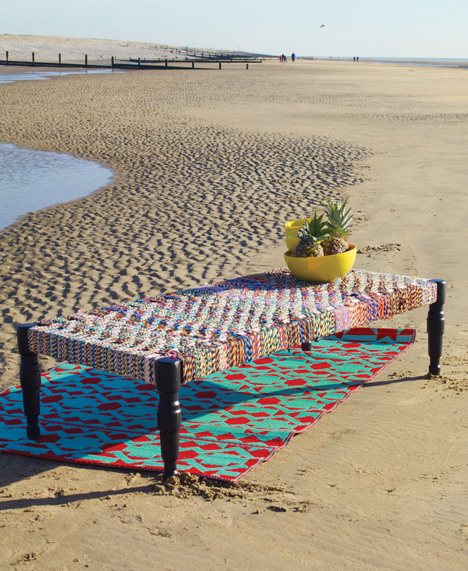
Marcus Fairs: How much of a departure is it from recent Habitat collections?
Polly Dickens: I think it's got a more coherent handwriting. It's come from a slightly different process. It's a very collaborative process. The orientation is put together by me and the design team of six people. The buyers are very involved in the products at every stage. So I feel there's a coherent handwriting that perhaps there wasn't before. There's a stronger feeling.
Of course it's also about producing well-priced products. We've got a sofa that I'm passionate about: the Clarke [below], which is a really nice British-made sofa. The three-seat sofa is £750, the two-seater is £600. And it grows from a detail. It grows from these lovely chubby beech legs with the curved bottom. That detail goes through the whole sofa and pulls it together. And to cap it all, the fabric is nice and it's extremely comfortable. So we're trying to address things on all fronts.
And I'm steeped in Conran; I mean I've been a part of it all my life. It is about things that look beautiful but also things that work and that's what [Habitat founder] Terence [Conran] would agree with.
Marcus Fairs: How can this collection help revitalise Habitat?
Polly Dickens: I think that because we've got an in-house design team - which is quite an unusual thing for a high-street retailer these days - we have an individuality. And we have experience in using materials in interesting ways, and in our use of colour, pattern and shape. I think that it's the individuality of Habitat that you really cannot find anywhere else.
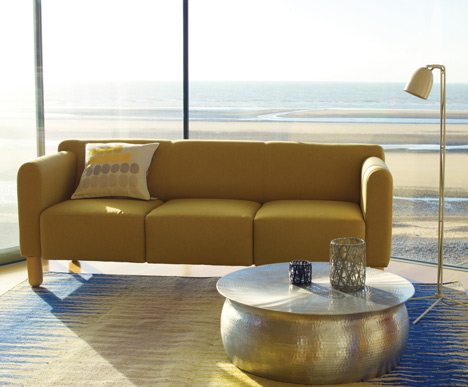
That's what's going to make it work, and the fact that we're looking at out prices. Orrico, that beautiful silver beaten aluminium table [above], is £200. If you stand in front of that table it's fantastic, it's a beautiful piece of sculpture, it's obviously been hand-made but it's not expensive. I think that's really important and that's the message we need to get across.
Marcus Fairs: You mentioned that the sofa is made in the UK, but what about the rest of the products?
Polly Dickens: They’re made all over the place. We are specifically moving our upholstery back into the UK and we're moving a lot of our manufacturing back into Europe; or at least out of China. That’s really important. So for example the Pedro tables [below] are made in a family-run factory in Poland and the tops are the most fantastic natural beech with an oil and wax finish, which is absolutely gorgeous and does really have a hand-finished feel.
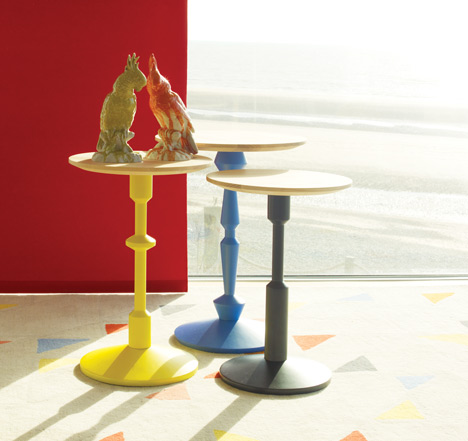
So we’re moving things back to the Europe, moving things back to the UK where we can, but also exploring techniques in other parts of the world. My great passion has always been India, and a lot of textiles - rugs particularly - are coming out of India, and that's where you can continue to experiment and to produce very special pieces.
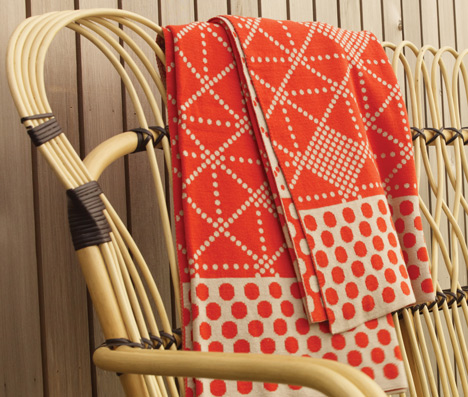
Marcus Fairs: Are you aiming for a different type of customer?
Polly Dickens: Our customer profile is sort of 25-45 really. That's the kind of age-group that we're aiming at but I think with Habitat, as with the Conran shop, it's not about your age - it's about your state of mind really.
Marcus Fairs: What is that state of mind?
Polly Dickens: I think Habitat provides products that can mix in happily with what you already own. I feel like a lot of the products will mix in happily with other things, and that's always been something about Habitat: you could always buy a piece of Habitat furniture and you could mix it in with the rest of what you own. When we've done customer research, that's been a very important thing.
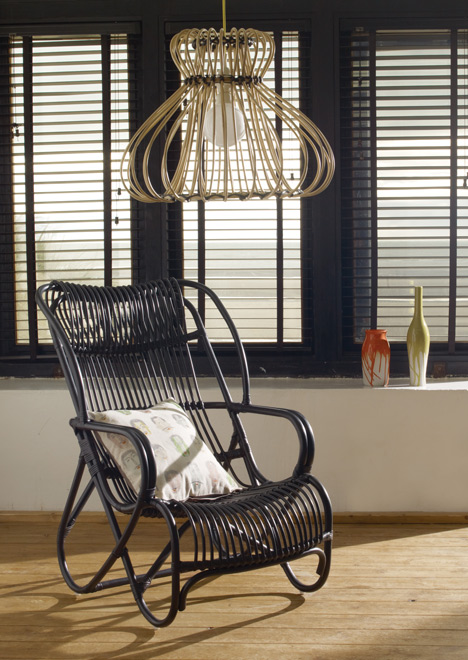
Marcus Fairs: What else did your customer research tell you? Did it help you understand why the brand got into trouble?
Polly Dickens: I'm creative director, so probably I'm not really the right person to answer that question. I just think that a lot of people had a hand in it and that it had lost its way stylistically. It had become quite diluted and people didn't really know what to expect from it any more.
I think what we're trying to do is to fulfil the expectation that it has got this strong character. That's what I come back to: I think of Habitat almost as a personality. And I think it had got sort of woolly at the edges and the customer didn't know what they were going to find when they went in there. Particularly latterly, when various other brands were introduced. That maybe confused people a bit.
Marcus Fairs: Is everything in the stores going to be designed in-house or will there be other products that you've sourced?
Polly Dickens: There are a few branded products that for one reason or another we can't or won't design for ourselves but [apart from those] every single piece of textile, every single piece of furniture, every single piece of lighting, every single piece of upholstery will be studio-designed.
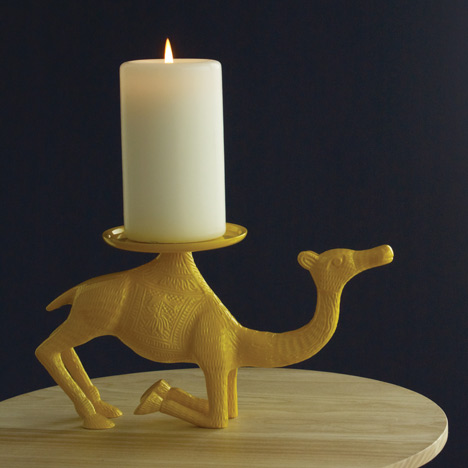
Marcus Fairs: But the in-house design team isn't new is it? Habitat always had a design team.
Polly Dickens: There has always been design team but it's moved on in the last 12 months. The colour and pattern person who works with me is Rebecca Boyd. She teaches at Central St Martins and she's been a designer in her own right for some years and she really has brought a very interesting handwriting to the table. Equally I have got an American designer, and Italian designer, a Japanese designer and a British designer at the moment so it’s a really interesting mixture of people.
Marcus Fairs: When will this collection hit the stores? When people visit the stores what differences will they notice about Habitat?
Polly Dickens: This collection will be in store at the end of February. I think that they'll feel a coherence and a sense of colour and, for this particular collection, there'll be also a strong feeling of craftsmanship.
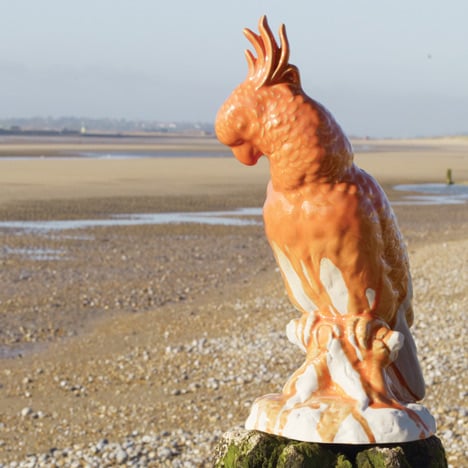
Marcus Fairs: And is the way the stores are designed changing?
Polly Dickens: The way the stores look has changed quite a lot. Don't go in now because the sale's about to start but had you gone into the store on say King's Road or Tottenham Court Road [both in London] in September, you would have seen quite a major difference.
The King's Road is where you will see the most difference, because the ground floor has gone back to how it was originally which is all furniture, apart from the frame collection at the front. The kitchen department had been moved upstairs; we've now moved that back downstairs. It has a wonderful, open, spacious furniture floor, and then in the basement it has all the accessory products.
I don't know if you remember the King's Road but it was all much more mixed up and the customer journey was quite confused. There's a real clarity about the store layout now in all our stores.
The other thing is windows. When Habitat was a 70-store business, windows were mass-produced capsule windows, because it was done at head office and could easily be rolled out across 70 stores. But now we're a smaller business, our windows can be much more visually inspiring and grittier.
For job opportunities at Habitat, visit their company profile on Dezeen Jobs.